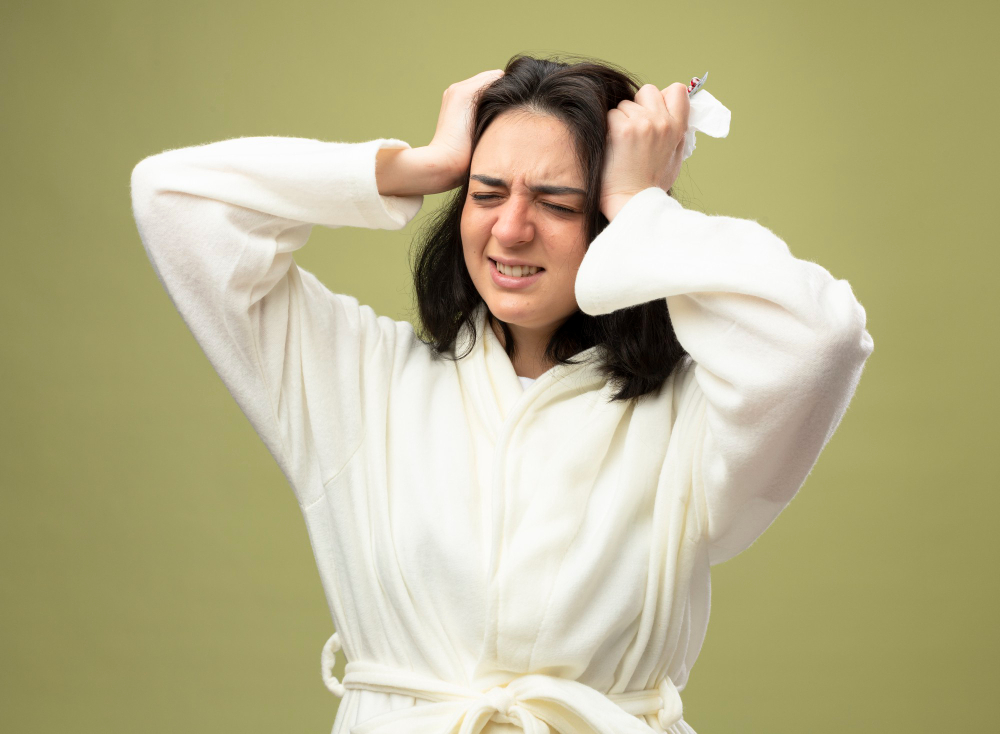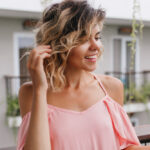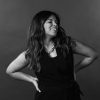Achieving the best scalp treatment in Boston is a key component of your new skincare routine. What does this mean? Clogged hair follicles are the new blocked pores.
So, your latest location to invest money is your scalp, and you have noticed new genre products, from scalp serums and scrubs to masks, to help care for it.
As your facial pores clog, your scalp pores can become clogged as well, leading to severe side effects, including hair loss. So, how do you deal with clogged hair follicles on your scalp?
What is a Clogged Hair Follicle?

The correct term for clogged hair follicles is folliculitis. It is common for a follicle to become inflamed, often due to bacteria.
Sometimes, it can look like a small pimple around your hair. The reason is that the follicle becomes blocked by cells sticking together inside. It leads to something similar, like a bottleneck trapping the oil in the follicle.
A fact is that something similar happens, leading to acne.
What Causes Hair Follicles to Become Clogged?
As a hair and scalp spa, we have identified several factors that contribute to clogged hair follicles. Folliculitis occurs when a hair follicle is infected with a bacterium, often Staphylococcus aureus.
However, other bacteria, viruses, or fungi can also cause this. Sometimes, an ingrown hair can block a hair follicle on the scalp. Still, we do not always know what causes it.
Excess Sebum
Sometimes, hair follicles become clogged by excess sebum (oil) or surplus debris, such as dead skin cells or hair products. This can also result from a dry scalp with thick, dead skin.
When you notice itchy pustules or red bumps on your scalp, they may result from product or oil buildup or a fungal infection and should be evaluated by a dermatologist.
Hot and Humid Conditions
Warm weather and sweating aggravate dandruff and folliculitis, promoting the colonization of hair follicles by the Malassezia yeast or bacteria.
Dead Skin
Another reason your hair follicles can become clogged is excess dead skin (hyperkeratosis) around them. Still, it can also be related to dandruff, scarring alopecia, fungal infections, or psoriasis.
Worthy Note: In many cases, overgrowth of naturally occurring scalp yeasts such as Malassezia can trigger folliculitis and clogged follicles.
Who is Prone to Getting Clogged Hair Follicles?
One thing we have found at our hair wellness spa is that anyone can develop clogged hair follicles. It can occur in dry or oily scalps, but is more likely to develop on oily skin. The reason is that it promotes inflammation and the growth of pathogenic organisms, such as bacteria or yeast, as seen in oily dandruff.
How Do You Deal With Clogged Hair Follicles?
So, how do you know you have a clogged hair follicle? There are a few signs, as seen here:
- Inflamed bumps
- Small to large bumps
- Pus-filled or crusty bumps similar to whiteheads
Over time, your skin becomes inflamed and may start to itch or burn. It often becomes infected and needs oral antibiotics. How do you remove a blocked hair follicle that you do not want to leave unattended?
The area can become more extensive and infected if left untreated. The skin becomes discolored or scarred, resulting in permanent hair loss.
It can sometimes develop into a chronic infection, such as cellulitis, which spreads to the blood and lymph nodes.
Symptoms of Clogged Hair Follicles on the Scalp
Common symptoms include:
- Itchy or irritated scalp
- Red or inflamed bumps
- Whitehead-like pustules
- Tenderness or burning sensation
- Bumps that resemble acne on the scalp
What Does a Clogged Hair Follicle Look Like?
A clogged follicle can appear as:
- A red bump around a hair
- A small pimple-like spot
- A white or yellow pus-filled bump
- Clusters of bumps that itch or burn
Treating Clogged Hair Follicles

Treating folliculitis is not difficult, as it can be done in several ways at home.
Do Not Skip Washing Sessions
Skipping hair washing can exacerbate the issue, but regular cleaning helps. Wash your hair using an anti-dandruff shampoo every day or on other days. If you sweat a lot, wash your scalp as soon as possible to prevent irritation. You can also use an antibacterial cleanser to cleanse the area.
Step Up Your Hair Game
If you have an excessively oily scalp with clogged pores and scales, you can start with an over-the-counter Nizoral shampoo containing 1% ketoconazole or a prescription shampoo containing 2% ketoconazole.
Still, we recommend washing your hair roots on the scalp only with medicated shampoo. Lather the shampoo for 5 minutes, then rinse it out with another shampoo to clean the rest of your hair to the ends.
While these shampoos are great for decreasing oil and treating dandruff, they can also dry out the rest of the strands, making them brittle and prone to breakage. Another great option is to use a scalp exfoliating treatment containing glycolic, hydroxylic, or salicylic acids.
It will open the clogged pores as the acids dissolve the bonds between skin cells, allowing them to shed more quickly.
Relieve Inflammation
If your scalp is red and irritated, you can use an anti-inflammatory medication, such as ibuprofen. Warm compresses can also help relieve the inflammation, and a topical steroid cream can be applied. You can also take an OTC antihistamine to soothe itching.
Check Hair Product Labels
We recommend avoiding shampoos containing dimethicone or silicone. Instead, you can exfoliate and descale your scalp by alternating between your regular shampoo and salicylic acid shampoo. Also, use different shampoos; avoid using the same one daily and rotate them.
Do Not Wear Hats
Another important consideration is not wearing helmets or hats for too long, as they can trap bacteria and oil, which can exacerbate the problem.
Do Not Touch And Treat Wounds
Apply an antibiotic ointment to large areas or open sores, and avoid touching when dealing with clogged hair follicles. You do not want to introduce more germs, which can lead to irritation. Lastly, if you shave your head, put your razor down; if you must, use a new, clean one.
How Long Does a Clogged Hair Follicle Treatment Take?
When we provide scalp therapy for sensitive scalps, especially those with blocked hair follicles, it can take one to two months before you notice improvement.
If you treat your scalp at home and your symptoms, such as pain, itching, irritation, scaling, pustules, or redness, do not improve within two months, or if you notice excessive hair shedding, visit your dermatologist.
Your dermatologist will prescribe different treatments to control oiliness, flaky scalp, itching, and inflammation. However, if you do not have any severe cases, book an appointment with us so we can customize a scalp treatment for you.
FAQ
What causes a blocked hair follicle?
Blocked hair follicles can occur due to excess oil, humid or warm temperatures, product or skin buildup, or a lack of exfoliation.
How can I get rid of clogged hair follicles?
You can use a hydroxy acid product, such as a glycolic or salicylic shampoo, to clear clogged pores. You can use over-the-counter or prescription-strength products, but apply them only to the scalp and roots, not the entire head.
What is folliculitis?
Folliculitis is the correct term for hair follicles that become blocked and inflamed, commonly due to bacterial infection.









